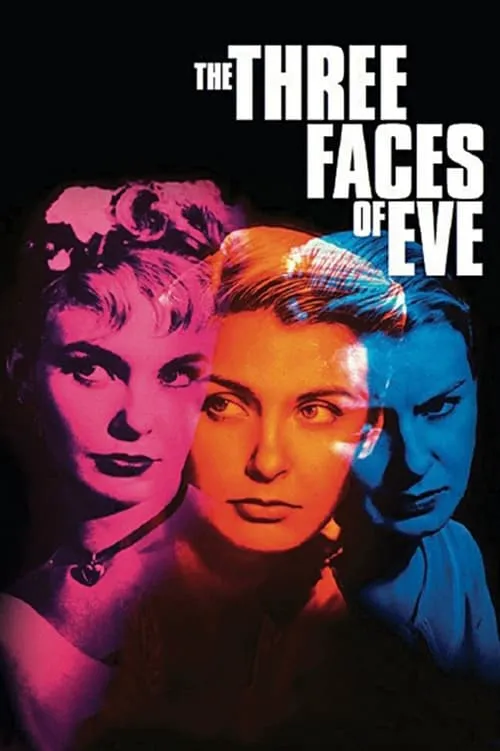The Three Faces of Eve

Plot
The Three Faces of Eve, a film released in 1957, is a psychological drama directed by Nunnally Johnson and starring Joanne Woodward in a groundbreaking performance that earned her an Academy Award for Best Actress. The movie tells the story of Eve White, a seemingly ordinary woman with a complex and intriguing personality disorder, which is now recognized as a manifestation of dissociative identity disorder, a mental health condition where an individual experiences multiple identities. The film's protagonist, Eve White, is a charming and pleasant housewife married to a kind but often intimidated man, Ken White. Her life is a facade of normalcy, with a devoted husband and a comfortable home, but beneath the surface lies a world of psychological turmoil. Eve's problems begin when she becomes the victim of a freak accident, which sets off a chain reaction of events leading to her transformation into multiple personalities. Dr. Luther, a psychiatrist, is brought in to treat Eve's increasingly bizarre behavior. He is intrigued by the case and determined to unravel the mystery of Eve's dual personality, which manifests itself as "Jane." Dr. Luther quickly discovers that Eve's second personality, Jane, is a sharp-tongued and confident individual who resents Eve's complacent nature. As Dr. Luther continues his analysis, he finds himself caught up in a battle of wills with the multiple personalities that inhabit Eve's psyche. Eve's alternate personalities continue to emerge, each one a reflection of her deep-seated desires and frustrations. "Jane" is soon joined by "Jane With Two Lives," a rebellious and assertive identity that embodies Eve's repressed desires for independence and self-expression. Dr. Luther's task is to guide Eve through a series of intense therapeutic sessions, which aim to confront and resolve the underlying conflicts that have led to her multiple personality disorder. Through her portrayal of Eve, Joanne Woodward delivers a tour-de-force performance that captures the complexity and tragedy of her character's condition. Woodward's acting is supported by a thoughtful and sensitive script, which offers a nuanced exploration of the human psyche and the delicate nature of mental illness. The film's cinematography is muted yet effective, capturing the claustrophobic atmosphere of Eve's domestic world and the chaos that erupts as her multiple personalities emerge. One of the standout aspects of The Three Faces of Eve is its pioneering portrayal of mental illness. In an era when mental health issues were often shrouded in secrecy and stigma, the film shed light on a previously misunderstood condition, sparking a wider conversation about the complexities of the human mind. The movie's use of multiple narrative threads and its exploration of Eve's fragmented psyche also prefigured the developments of modern therapeutic theories and the recognition of dissociative identity disorder as a legitimate mental health condition. The performances in The Three Faces of Eve are, on the whole, strong and engaging, with Joanne Woodward and a supporting cast delivering nuanced portrayals of the characters. The film's themes of identity, self-discovery, and the complexities of human behavior remain relevant today, making it a thought-provoking and compelling watch. In the context of Hollywood's Golden Age, The Three Faces of Eve is a groundbreaking film that helped pave the way for future portrayals of mental illness on screen. In the end, The Three Faces of Eve is a poignant exploration of the human condition, a testament to the complexities and fragilities of the human psyche. Joanne Woodward's performance as Eve White, with her multiple and contradictory personas, remains an unforgettable and deeply moving portrayal of a character caught between her multiple identities.
Reviews
Recommendations




